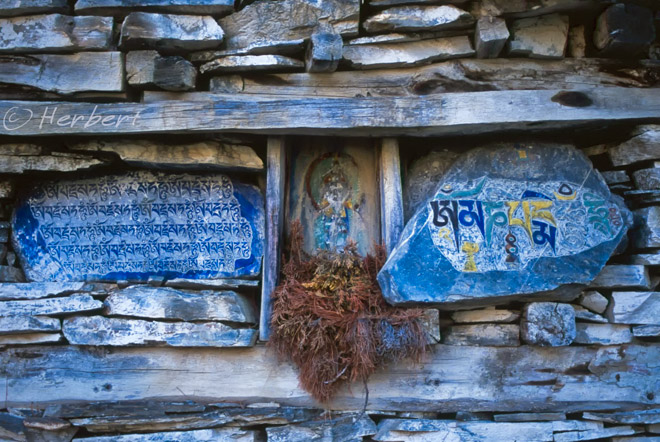
Location: Manang on Annapurna Circuit, Nepal (28�39.67'N 84�03.53'E)
Date: 8 April 2000; 8.15am
Camera: Canon EOS 500N (analogue) on slides and scanned
Like prayer flags, mani stones are common sights in places where there are significant Tibetan Buddhist communities. Mani stones are stone plates, rocks or pebbles that are inscribed with Buddhist mantra (hence the name �mani stones�) or devotional designs or images. Mani stones are normally placed along roadsides or rivers as offering to the spirits of places. These stones are commonly placed together to form mounds or cairns and in some cases, walls, known as mani walls. Mani walls should be circumvented from the left side or in a clockwise direction (in the case of the Bon religion, it is cross from the opposite side and direction). Sometimes other devotional materials such as yak horns are placed together with the mani stones as offerings. Carving mani stones is an exquisite art that is increasingly being practised by artisans as a means of making a living.